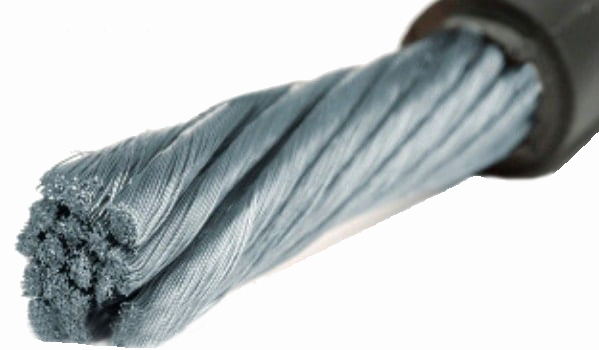 Because it was less expensive, aluminum wire was used in residential construction from the 1960s to the mid-1970s. It was later discovered that aluminum is a potential fire hazard because electrical devices such as circuit boxes, outlets, switches, lighting, and fans were not designed with it in mind. Unlike copper wiring, aluminum leads to loose connections, which can overheat and start fires. The following properties make aluminum undesirable:
Because it was less expensive, aluminum wire was used in residential construction from the 1960s to the mid-1970s. It was later discovered that aluminum is a potential fire hazard because electrical devices such as circuit boxes, outlets, switches, lighting, and fans were not designed with it in mind. Unlike copper wiring, aluminum leads to loose connections, which can overheat and start fires. The following properties make aluminum undesirable:
- Higher Electrical Resistance. Aluminum has a high resistance to electrical current flow, which can lead to overheating.
- Less Ductile. Aluminum will fatigue and break down more readily when subjected to bending. Fatigue will cause the wire to break down internally and increasingly resist electrical current, leading to excessive heating.
- Galvanic Corrosion. In the presence of moisture, aluminum will undergo galvanic corrosion when it comes into contact with certain dissimilar metals.
- Oxidation. Exposure to oxygen in the air causes deterioration to the outer surface of the wire through oxidation. Over time, oxidation can deteriorate connections and present a fire hazard.
- Greater Malleability. Aluminum is soft and malleable, meaning it is highly sensitive to compression. After a screw has been over-tightened on aluminum wiring, for instance, the wire will continue to deform or “flow” even after the tightening has ceased. This deformation will create a loose connection and increase electrical resistance in that location.
- Greater Thermal Expansion and Contraction. Aluminum expands and contracts with changes in temperature. This leads to loose connections and overheating.
- Excessive Vibration. Electrical current vibrates as it passes through wiring. This vibration is more extreme in aluminum than in copper. The vibrations will lead to loose connections and overheating.
Duty to Repair/Replace. The responsibility for repairing and replacing aluminum wiring with copper or installing copper pigtails will depend on the language in each association's governing documents. In most instances, it will be the association's responsibility since the wiring is located in the walls, and most governing documents define it as common area for which the association is responsible.
Insurance. For associations, some insurance carriers have stopped insuring condominium buildings with aluminum wiring because of the fire hazard. Those that continue to insure the building against fire loss will often significantly increase their premiums, making the insurance more costly. For owners, if a special assessment is imposed for replacing the wiring, loss assessment insurance may not cover the assessments. The insurance is for assessments related to covered losses. Upgrading or updating electrical components would be considered a maintenance item. General maintenance, upkeep, and repair is generally not a covered event. Therefore, loss assessment coverage would not apply. Owners would need to check with their insurance broker to find out for sure.
Recommendation: Associations with aluminum wiring should have it inspected and maintained annually by a licensed electrician and should develop a plan for installing copper pigtails throughout.
ASSISTANCE: Associations needing legal assistance can contact us. To stay current with issues affecting community associations, subscribe to the Davis-Stirling Newsletter.